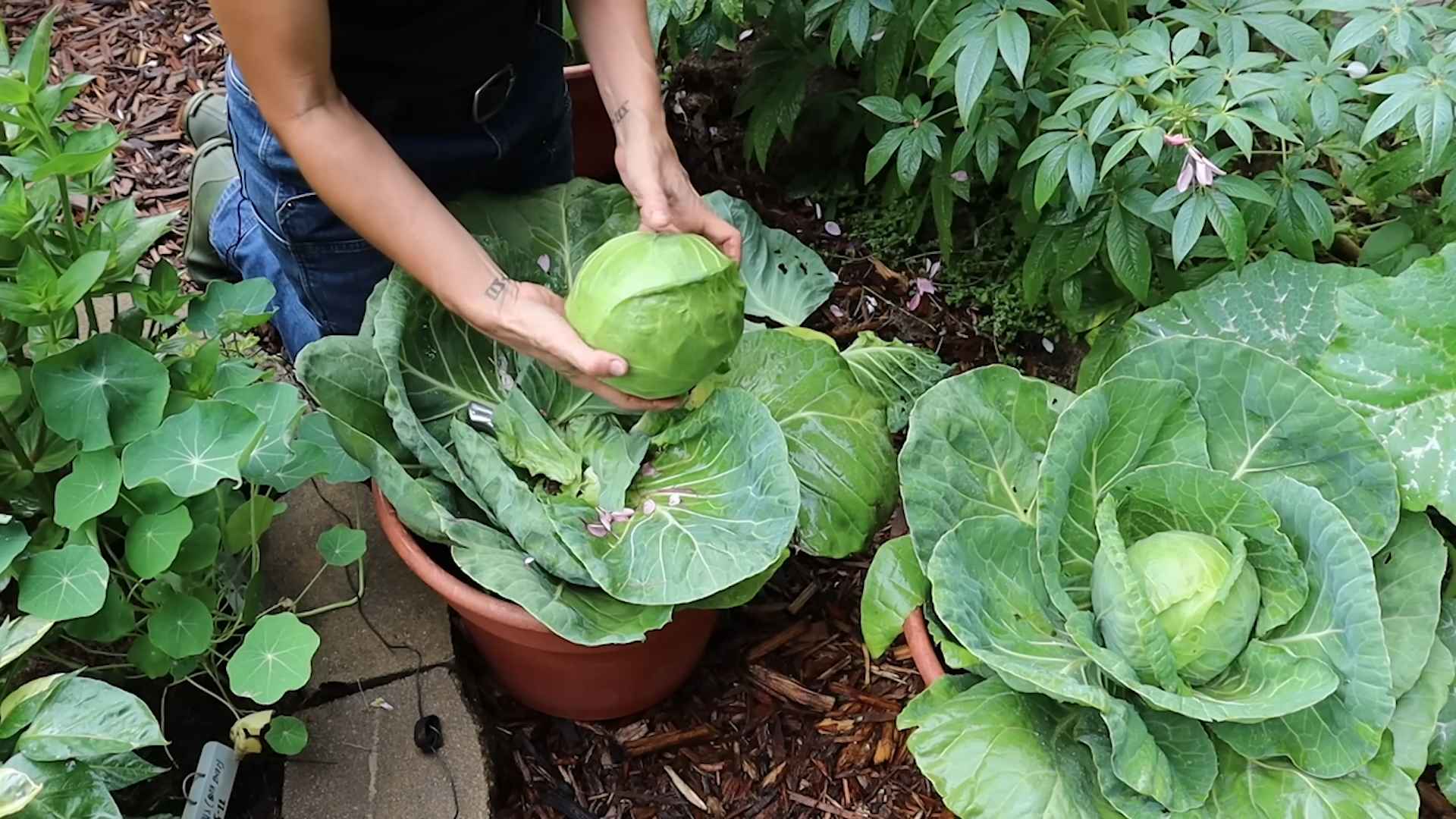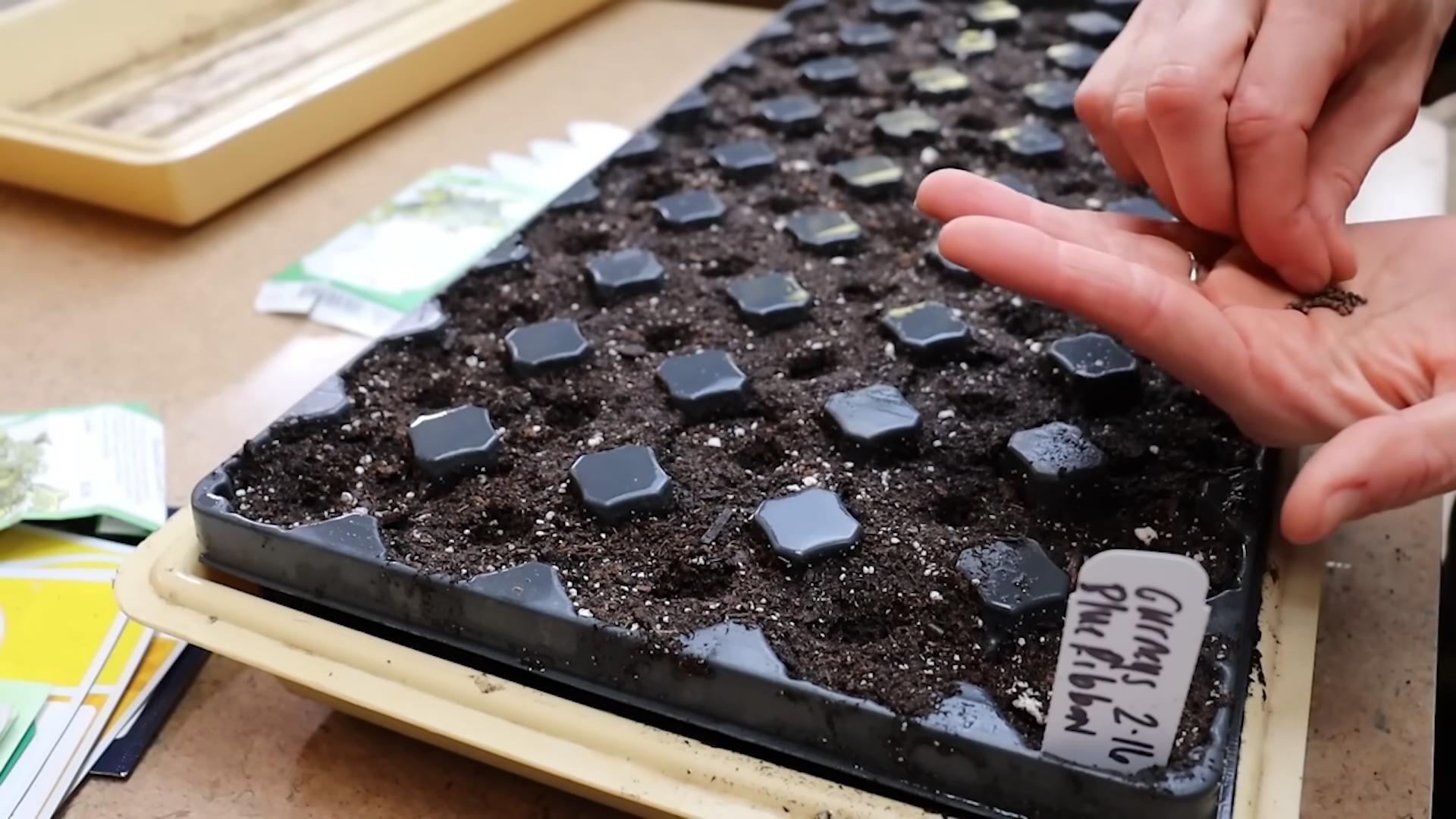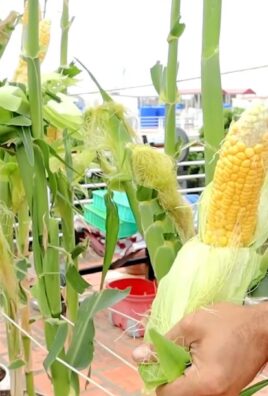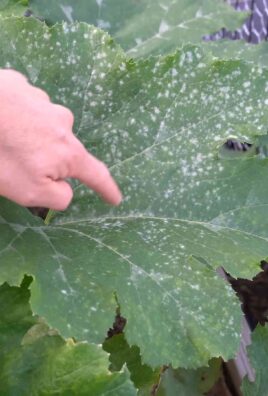Plant Pointed Cabbage and unlock a world of fresh, homegrown goodness right in your backyard! Have you ever dreamt of strolling through your garden, snipping off the perfect cabbage head for a delicious, healthy meal? Well, that dream can become a reality, and it’s easier than you might think. This DIY guide is packed with simple tricks and hacks to help you successfully cultivate these unique vegetables, even if you’re a complete beginner.
Cabbage, in general, has a rich history, dating back thousands of years. From ancient Rome, where it was prized for its medicinal properties, to medieval Europe, where it was a staple food, cabbage has nourished civilizations. Pointed cabbage, with its distinctive conical shape, offers a delightful twist on this classic vegetable. Its sweeter, more tender leaves make it a versatile ingredient for salads, slaws, stir-fries, and more.
But why should you bother with growing your own? In today’s world, where we’re increasingly conscious of where our food comes from, plant pointed cabbage allows you to take control. You’ll know exactly what’s going into your vegetables – no harmful pesticides or hidden chemicals. Plus, there’s nothing quite like the satisfaction of harvesting something you’ve nurtured from seed to table. This DIY article will provide you with the essential knowledge and practical tips to grow healthy, delicious pointed cabbages, saving you money and enhancing your culinary experience. Let’s get started!

Growing Pointed Cabbage: A DIY Guide for a Delicious Harvest
Hey there, fellow gardening enthusiasts! I’m so excited to share my experience growing pointed cabbage. It’s a fantastic vegetable to add to your garden, offering a slightly sweeter and more tender flavor than regular round cabbage. Plus, its unique conical shape is just plain fun! This guide will walk you through everything you need to know, from starting seeds to harvesting your beautiful pointed cabbages.
Choosing the Right Variety and Timing
Before we get our hands dirty, let’s talk about variety and timing. Choosing the right variety for your climate and knowing when to plant is crucial for success.
* Variety Selection: Look for varieties specifically labeled “pointed cabbage” or “conehead cabbage.” Some popular choices include ‘Hispi’, ‘Caraflex’, and ‘Sweet Point’. Consider your local climate and growing season when making your selection. Some varieties are better suited for early or late harvests.
* Timing is Key: Pointed cabbage thrives in cool weather. I usually start my seeds indoors about 6-8 weeks before the last expected frost. You can also direct sow seeds outdoors a few weeks before the last frost, but starting indoors gives you a head start. For a fall harvest, sow seeds in mid-summer.
Starting Seeds Indoors (My Preferred Method)
Starting seeds indoors gives your cabbage plants a strong foundation and protects them from early-season pests and harsh weather.
1. Gather Your Supplies: You’ll need seed starting trays or small pots, seed starting mix (a light, well-draining mix is essential), pointed cabbage seeds, a spray bottle filled with water, and a grow light (optional, but highly recommended).
2. Prepare the Seed Starting Mix: Moisten the seed starting mix with water until it’s damp but not soggy. Fill your seed starting trays or pots with the moistened mix.
3. Sow the Seeds: Make a small indentation (about ¼ inch deep) in the center of each cell or pot. Place 2-3 seeds in each indentation. Gently cover the seeds with the seed starting mix.
4. Water Gently: Use a spray bottle to mist the surface of the soil. Avoid overwatering, as this can lead to damping-off disease.
5. Provide Warmth and Light: Place the seed starting trays or pots in a warm location (around 70-75°F). If you’re using a grow light, position it a few inches above the soil surface. If not, place them near a sunny window.
6. Maintain Moisture: Keep the soil consistently moist, but not waterlogged. Check the soil daily and mist with water as needed.
7. Thin Seedlings: Once the seedlings have developed their first true leaves (the second set of leaves), thin them to one plant per cell or pot. Choose the strongest seedling and snip off the others at the soil line.
Preparing the Garden Bed
While your seedlings are growing indoors, it’s time to prepare the garden bed. Pointed cabbage needs well-drained soil that’s rich in organic matter.
1. Choose a Sunny Location: Pointed cabbage needs at least 6 hours of sunlight per day.
2. Amend the Soil: Dig in plenty of compost or well-rotted manure to improve soil fertility and drainage. I like to add a balanced organic fertilizer as well.
3. Check the Soil pH: Cabbage prefers a soil pH between 6.0 and 7.0. You can test your soil pH with a soil testing kit and amend it accordingly. If your soil is too acidic, add lime. If it’s too alkaline, add sulfur.
4. Create Planting Rows: Rake the soil smooth and create planting rows about 18-24 inches apart. This spacing allows for good air circulation and prevents overcrowding.
Transplanting Seedlings Outdoors
Once the danger of frost has passed and your seedlings have developed several sets of true leaves, it’s time to transplant them outdoors.
1. Harden Off Seedlings: Before transplanting, you need to harden off your seedlings. This process gradually acclimates them to outdoor conditions. Start by placing the seedlings outdoors in a sheltered location for a few hours each day, gradually increasing the amount of time they spend outdoors over the course of a week.
2. Choose a Cloudy Day: Transplanting on a cloudy day minimizes stress on the seedlings.
3. Dig Planting Holes: Dig planting holes that are slightly larger than the root balls of the seedlings. Space the holes 18-24 inches apart within the rows.
4. Gently Remove Seedlings: Carefully remove the seedlings from their cells or pots, being careful not to damage the roots.
5. Plant Seedlings: Place the seedlings in the planting holes and gently backfill with soil. Make sure the top of the root ball is level with the surrounding soil.
6. Water Thoroughly: Water the newly transplanted seedlings thoroughly to help them settle in.
7. Apply Mulch: Apply a layer of mulch around the plants to help retain moisture, suppress weeds, and regulate soil temperature. I like to use straw or shredded leaves.
Caring for Your Pointed Cabbage Plants
Once your pointed cabbage plants are in the ground, it’s important to provide them with proper care to ensure a healthy and bountiful harvest.
1. Water Regularly: Pointed cabbage needs consistent moisture, especially during hot, dry weather. Water deeply and regularly, aiming to keep the soil consistently moist but not waterlogged.
2. Fertilize Regularly: Feed your cabbage plants with a balanced organic fertilizer every few weeks. This will provide them with the nutrients they need to grow and develop.
3. Weed Regularly: Keep the garden bed free of weeds, as they can compete with the cabbage plants for nutrients and water.
4. Protect from Pests: Cabbage is susceptible to several pests, including cabbage worms, cabbage loopers, and aphids. Inspect your plants regularly for signs of pests and take action as needed. I prefer using organic pest control methods, such as handpicking pests, using insecticidal soap, or applying Bacillus thuringiensis (Bt).
5. Prevent Cabbage Root Fly: Cabbage root fly can be a serious problem. To prevent it, use netting or horticultural fleece to cover your plants. You can also use cabbage collars around the base of the plants to prevent the flies from laying their eggs in the soil.
6. Monitor for Diseases: Keep an eye out for signs of diseases, such as black rot and clubroot. If you suspect your plants have a disease, remove the affected plants immediately and dispose of them properly. Avoid planting cabbage in the same location for several years to prevent the buildup of soilborne diseases.
Harvesting Your Pointed Cabbage
Harvest time is the most rewarding part of gardening! Pointed cabbage is typically ready to harvest in 60-80 days from transplanting, depending on the variety.
1. Check for Firmness: The cabbage head should feel firm and solid when gently squeezed.
2. Look for the Right Size: The size of the head will vary depending on the variety, but it should be a good size for its type.
3. Cut the Head: Use a sharp knife to cut the head from the plant, leaving a few outer leaves attached.
4. Store Properly: Store harvested cabbage in the refrigerator. It will keep for several weeks.
Troubleshooting Common Problems
Even with the best care, you might encounter some problems while growing pointed cabbage. Here are a few common issues and how to address them:
* Cabbage Worms: These green caterpillars can quickly devour cabbage leaves. Handpick them off the plants or use Bt.
* Aphids: These small, sap-sucking insects can weaken plants. Spray them with insecticidal soap.
* Slugs and Snails: These pests can damage leaves and heads. Use slug bait or handpick them at night.
* Clubroot: This soilborne disease causes swollen roots and stunted growth. Improve soil drainage and avoid planting cabbage in the same location for several years.
* Bolting: This occurs when cabbage plants flower prematurely, usually due to stress from heat or lack of water. Provide consistent moisture and shade during hot weather.
Enjoying Your Harvest
Now that you’ve harvested your beautiful pointed cabbages, it’s time to enjoy them! Pointed cabbage is delicious raw in salads, coleslaw, or slaws. It’s also great cooked in stir-fries, soups, and stews. I love to lightly sauté it with garlic and olive oil for a simple and flavorful side dish.
Growing pointed cabbage is a rewarding experience. With a little planning and care, you can enjoy a delicious and unique vegetable from your own garden. Happy gardening!

Conclusion
So, there you have it! Mastering the art of planting pointed cabbage doesn’t require a green thumb blessed by the gardening gods. It’s about understanding the plant’s needs, providing the right environment, and a little bit of patience. This DIY approach, from seed to harvest, empowers you to cultivate fresh, delicious pointed cabbage right in your own backyard, offering a level of control and satisfaction you simply can’t get from store-bought varieties.
Why is this DIY trick a must-try? Firstly, the taste. Homegrown pointed cabbage bursts with a freshness and sweetness that’s often lost in transit and storage. Secondly, you know exactly what’s going into your food. No mystery pesticides or herbicides – just pure, wholesome goodness. Thirdly, it’s incredibly rewarding. Watching those tiny seeds sprout and develop into vibrant, cone-shaped heads is a truly fulfilling experience. Finally, you’ll save money in the long run, especially if you enjoy pointed cabbage regularly.
But the benefits extend beyond the practical. Gardening is a fantastic stress reliever, a way to connect with nature, and a great activity for the whole family. Involving children in the process teaches them about where their food comes from and encourages healthy eating habits.
Looking for variations? Consider companion planting. Marigolds deter pests, while dill attracts beneficial insects. Experiment with different soil amendments to see what works best in your area. Try succession planting, sowing seeds every few weeks, to ensure a continuous harvest throughout the growing season. You can also explore different varieties of pointed cabbage, each with its own unique flavor and texture. Some are sweeter, some are more compact, and some are better suited for specific climates.
We wholeheartedly encourage you to give this DIY trick a try. Don’t be intimidated if you’re a beginner. Start small, learn as you go, and don’t be afraid to experiment. The rewards are well worth the effort.
And most importantly, share your experience! We’d love to hear about your successes, your challenges, and any tips or tricks you discover along the way. Post photos of your pointed cabbage harvest on social media using #HomegrownPointedCabbage or leave a comment below. Let’s build a community of passionate gardeners and share the joy of growing our own food. Happy planting!
Frequently Asked Questions (FAQ)
What is the best time of year to plant pointed cabbage?
The ideal time to plant pointed cabbage depends on your climate. In general, pointed cabbage thrives in cooler temperatures. For spring harvests, start seeds indoors 6-8 weeks before the last expected frost. Transplant seedlings outdoors 2-3 weeks before the last frost. For fall harvests, sow seeds directly into the garden in mid-summer, about 10-12 weeks before the first expected frost. Consider your local climate and adjust planting times accordingly. If you live in a region with mild winters, you may be able to grow pointed cabbage as a winter crop.
What kind of soil is best for pointed cabbage?
Pointed cabbage prefers well-drained, fertile soil with a pH between 6.0 and 7.0. Amend your soil with compost or well-rotted manure before planting to improve drainage and fertility. If your soil is heavy clay, consider adding sand or other organic matter to improve drainage. A soil test can help you determine the pH and nutrient levels of your soil and guide you in making necessary amendments.
How much sunlight does pointed cabbage need?
Pointed cabbage requires at least 6 hours of direct sunlight per day. Choose a planting location that receives full sun for optimal growth. If you live in a hot climate, some afternoon shade may be beneficial to prevent the plants from bolting (going to seed prematurely).
How often should I water pointed cabbage?
Water pointed cabbage regularly, especially during dry periods. Aim to keep the soil consistently moist but not waterlogged. Water deeply at the base of the plants, avoiding wetting the foliage, which can increase the risk of fungal diseases. Mulching around the plants can help retain moisture and suppress weeds.
What are some common pests and diseases that affect pointed cabbage?
Common pests that affect pointed cabbage include cabbage worms, aphids, flea beetles, and cabbage root maggots. Common diseases include clubroot, black rot, and downy mildew. Regularly inspect your plants for signs of pests or diseases. Use organic pest control methods, such as insecticidal soap or neem oil, to control pests. Practice crop rotation and choose disease-resistant varieties to prevent diseases.
How do I prevent cabbage worms from eating my pointed cabbage?
Cabbage worms are a common pest that can decimate a pointed cabbage crop. To prevent them, consider using row covers to physically exclude the moths that lay the eggs. Bacillus thuringiensis (Bt) is an effective organic insecticide that targets cabbage worms. Regularly inspect your plants and handpick any worms you find. Companion planting with herbs like rosemary and thyme can also help deter cabbage moths.
How long does it take for pointed cabbage to mature?
Pointed cabbage typically matures in 60-80 days from transplanting. The exact time will depend on the variety, growing conditions, and climate. You’ll know your pointed cabbage is ready to harvest when the head is firm and compact.
How do I harvest pointed cabbage?
To harvest pointed cabbage, use a sharp knife to cut the head from the stem at the base of the plant. Leave a few outer leaves intact to protect the head during storage.
How do I store pointed cabbage?
Store pointed cabbage in the refrigerator for up to 2 weeks. Wrap the head in plastic wrap or place it in a plastic bag to prevent it from drying out. You can also store pointed cabbage in a root cellar or cool, dark place for longer periods.
Can I grow pointed cabbage in containers?
Yes, you can grow pointed cabbage in containers, but you’ll need to choose a large container (at least 12 inches in diameter) to accommodate the plant’s root system. Use a well-draining potting mix and provide regular watering and fertilization. Container-grown pointed cabbage may require more frequent watering than plants grown in the ground.
What are some good companion plants for pointed cabbage?
Good companion plants for pointed cabbage include:
* Marigolds: Deter pests
* Dill: Attracts beneficial insects
* Rosemary: Deters cabbage moths
* Thyme: Deters cabbage moths
* Nasturtiums: Trap crop for aphids
* Garlic: Deters pests
* Onions: Deters pests
Can I save seeds from my pointed cabbage?
Saving seeds from pointed cabbage can be challenging because cabbage is a biennial plant, meaning it typically flowers and produces seeds in its second year. To save seeds, you’ll need to overwinter the plant and allow it to flower the following spring. However, cabbage is also cross-pollinated, so you’ll need to isolate your plants from other members of the Brassica family (such as broccoli, cauliflower, and kale) to prevent cross-pollination and ensure that the seeds are true to type. For most home gardeners, it’s easier to purchase seeds from a reputable source each year.





Leave a Comment